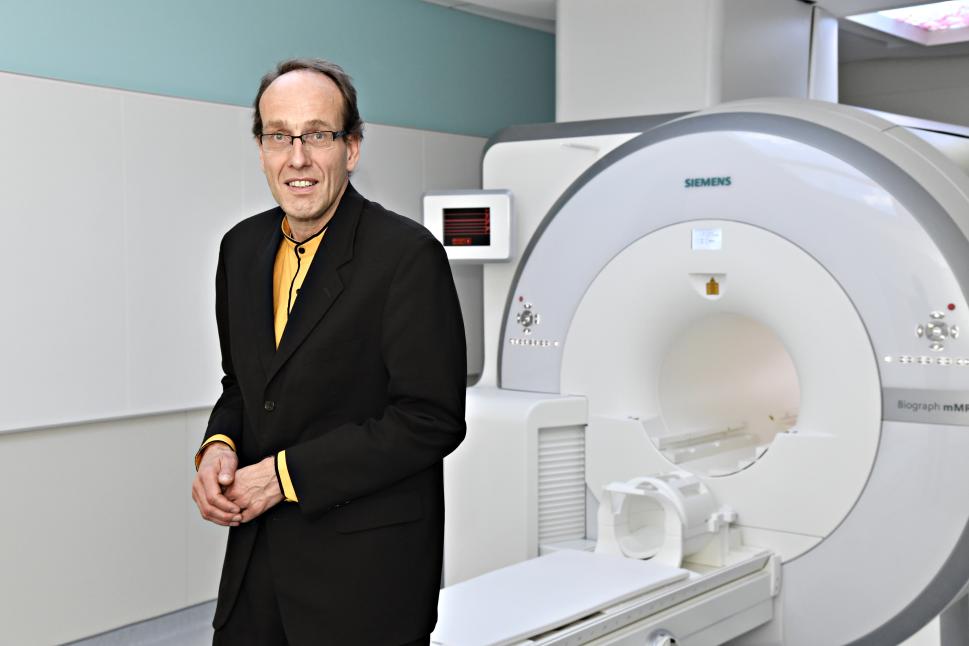Discovery offers a new way to understand and diagnose mood disorders such as depression and bipolar disorder
Ottawa, ON., Wednesday, Sept. 17, 2025 — For the first time, scientists have shown that the brain’s electrical activity reveals measurable time scales of thought — the duration of how long a thought “lasts” in the brain. Published in the Proceedings of the National Academy of Sciences (PNAS), this breakthrough opens new possibilities for diagnosing and treating mental illnesses such as depression and bipolar disorder.
Led by Dr. Georg Northoff, neuroscientist and psychiatrist at University of Ottawa Institute of Mental Health Research (IMHR) at The Royal and Professor of Psychiatry at the University of Ottawa, the study demonstrates that self-focused thoughts (such as rumination) unfold over a longer time scale, while externally-focused thoughts (such as noticing the environment) occur over a shorter one. Using a simple finger-tapping task combined with EEG, researchers were able to measure these differences with precision.
“For decades, we’ve been able to measure heartbeats, breathing, and brainwaves — but not the duration of thought itself,” said Dr. Georg Northoff, lead author. “This study shows that thoughts have a measurable tempo. That opens a completely new window into how mental disorders work, and how we might one day diagnose and personalize therapy based on thought dynamics, not just symptoms.”
The findings have major implications for psychiatry. In depression, for example, patients often experience persistent, slow, inward-focused thoughts, making it difficult to shift attention outward. Measuring the time scale of thought could provide clinicians with an objective biomarker to distinguish between major depressive disorder and bipolar depression, two conditions that require different treatments.
“This is a transformative step for mental health research,” said Dr. Florence Dzierszinski, President and CEO of IMHR and Vice-President, Research, The Royal. “By making the invisible visible — turning thought into something measurable — Dr. Northoff and his team are laying the groundwork for a future where diagnosis and treatment of mental illness can be more precise, personalized, and effective.
The study is part of Northoff’s broader work on the “spatiotemporal neuroscience” of brain and mind — understanding mental processes through the dimensions of space and time. For mental disorders, it means that the symptoms must be understood in terms of time and space - Spatiotemporal Psychopathology. This lays the groundwork for expanding testing and measuring different symptoms in clinical populations and exploring how thought dynamics might inform targeted interventions.
The full study can be found in PNAS at www.pnas.org/doi/10.1073/pnas.2427088122
Media Contact:
Andrea MacLean, Director, Communications and Community Engagement, The Royal
andrea.maclean@theroyal.ca, 613-316-9442

